The Rough Field Spotters Guide for Mopar Overdrives
Overview:
We keep being asked about Mopar Overdrives, so I thought I would do a blog on spotting overdrives.
I know from the start this is not the definitive guide, thus I have titled it - "The Rough Field Spotters Guide for
Overdrives" and this will start off being slanted towards Plymouths !
This will definitely grow as I need to take some pictures of earlier (pre-1942) overdrives to put up.
If you want to add replies with more information, super, more than welcome. If you want to send me pictures
and add them in, again more than welcome. I will be putting a list of contributors on the bottom. I say that because my intention if to keep adding to this. As well I will put up a few pictures that I happen to have close at hand, but will adjust, add and change pictures as time goes on.
I may also put in a tab with links to other sites, article etc on overdrives as I find them !
Chapter 1:
Chrysler started using Overdrive Transmissions in 1934 and Walter Chrysler described it something to the effect, that the use of true overdrive transmissions were made for high speed cruising and award-winning economy should drivers opt for moderate operation.
"Walter P. Chrysler at White House (cropped)" by Harris & Ewing, photographer
There were several generation of early overdrives used prior to Walter Chrysler's death on 1940, starting with the introduction in
1934 and there use would extend to every part of the Mopar family before the retirement of the L-Head of Flathead Engine Line.
We will concentrate here on the early overdrives, leading up to the "peak" of the Borg Warner Electric Overdrive coming out in the 1952 Plymouth Car line with the R10G1 Borg Warner overdrive attached to a 3 speed manual transmission. The R10G1 was used fro 1952 to 1956, when Plymouth then changed to the longer R10J1 Borg Warner overdrive transmission.
Along the way in the 1952 Canadian Dodge and Fargo heavy trucks a 5 speed transmission was introduced with an option of having 5th gear as overdrive. Teamed up with a 2 speed rear axle, it provided quite a range for hauling heavy payloads, or rolling down the highway empty.
Chapter 2: - The history of the overdrives (short version)
On Monday April 13, 1931 when the United States Patent Office opened, Rex Keller was there to file application # 529,666, making 36 Claims for patent of a “Clutch”. This application would eventually be issued of May 16, 1939 as patent # 2,158,544 to Rex E Keller Los Angeles California.
The application for patent was pitched to Walter P Chrysler, who would assign it to Carl Breer the head of Engineering to see if they could utilize the concept. In Carl Breers, book/autobiography entitled “The Birth of Chrysler Corporation and Its Engineering Legacy” there is an excellent explanation of what took place and here is an excerpt of that book.
It would be during this process that the terms “Keller Clutch” and “Overdrive” would come forward. It should be noted that this “Keller Clutch” is not named after K.T Keller (Kaufman Thuma Keller) who was head of Chrysler Manufacturing at the time, and would upon Walter Chrysler retiring in 1935 become the “hand-appointed successor” as Chairman of the Board of Chrysler Corporation, but was Rex E Keller and inventor from Los Angeles California.
Once Engineering had perfected the Overdrive Transmission Carl Breer discussed its manufacturing with K.T Keller, and both asked for a meeting with Walter Chrysler to discuss that matter. Breer and Keller made a presentation on both the “Keller Clutch”/Overdrive Transmission as well as its manufacture Their estimated cost to setup manufacturing was $25,000, to which Walter Chrysler is quoted in Breers book as saying “We can’t afford it; let Borg Warner make it.”
What isn’t included in Breer’s book is how the $25,000 estimate was arrived at, or what the recommendation of Keller and Breer was. It is my belief that Keller, who was already stretched to bring the new Airflow to completion made sure the estimate was high enough that the joint recommendation of Keller and Breer would be approved by Walter Chrysler.
My Grandfather’s opinion was that this was the most expensive error in Chrysler’s history and ironically mirrored that of Henry Ford with the Dodge Brothers. While it brought the Overdrive transmission to the Chrysler and Desoto lines well ahead of any other automotive manufacturer, it also opened up a Patent that was controlled by Chrysler to its competition through the manufacturing deal with Borg Warner. It would soon be referred to as “the Borg Warner Overdrive”.
Well after my Grandfather’s death when Daimler agreed to sell the Chrysler unit to Cerberus Capital Management in May 2007 for US$6 billion, Borg Warner had a market cap value of almost twice the value of Chrysler.
Unfortunately it seems Grandfather was indeed correct, and he often pointed out that it was not the 1st time where a smaller supplier was put into business and eventually dwarfed the larger manufacturer. Of course he was referring to the Dodge Brothers who prior to going on their own to manufacture their own Cars and Trucks, were major suppliers for Henry Ford. In 1903 the Dodge brothers had agreed to supply Henry Ford with 650 chassis (including engines, transmissions, and axles) for $250 each.
In this case to avoid a further investment of $25,000 Chrysler put a much small manufacturer into a business, which later on would come back to bite Chrysler. To put it into relative terms Chrysler had purchased Dodge for approximately $170 million in 1928.
On March 14, 1934 Rex Keller would file application # 715,513, with the United States Patent Office making 4 Claims for patent of an ”Automatic Transmission”. This application would eventually be issued of December 17, 1940 as patent # 2,225,174 to Rex E Keller Beverly Hills California. It would be in this application for patent that the first use of the terminology “Overdrive” would be used. Ironically this patent was not issued until after Walter P Chrysler’s death some 4 months earlier.
So who was Borg Warner -
In 1902 Thomas W. Warner formed the Warner Gear Company in Muncie Indiana to manufacture automobile parts, steering, and transmission gears. In 1909 the First manual transmission is manufactured by Warner Gear. The original Borg-Warner Corporation was formed in 1928 by the merger of Warner Gear, which itself was founded by Thomas Warner in 1901; Borg & Beck founded by Charles Borg and Marshall Beck in 1903 and Marvel Schelber Carburetor Co founded in 1905 by George Schebler and the Mechanics Universal Joint Company.
Chapter 3: The patents
- Work in progress. I now have them, just need to figure out how to get them in the blog entry
Chapter 4: The overdrive generations
This is a high level chart on the various Mopar Overdrives
1934 overdrive 1st used by Chrysler (I believe in the Chrysler Custom Imperial Royal and the Airflow)
This was a Warner Transmission and Warner Overdrive
Patent Image - R E Keller Patent: 2,225,174 Filed: March 14 1934
Walter P Chrysler showing of The 1934 chrysler airflow - equipped with overdrive
1935 Chrysler - Tr14 warner transmission with a separate overdrive unit.
It expanded in the models it was used, some standard equipment and some Optional
The models this transmission and overdrive came in were:
CHRYSLER AIRFLOW, MODEL Cl OPTL.
CHRYSLER IMPERIAL, C2 (1935)
CHRYSLER CUST. IMP. CW* ('35), C3 ('35),
DE SOTO, MODEL SG (1935)--OPTL.
An early advertisement showing "over drive"
1936- This year is one on to its own it is a 1 piece - Borg Warner T86 1A overdrive transmission
1937 - This is the first year of the Borg Warner R6 transmission
The 1937 is the last year with the parking brake on the floor and the parking brake drum on
the back of the transmission has the connection on the right side. Its still a non electric overdrive.
It is at this point that Chrysler really started to pump the overdrive in its marketing brochures.
Not only was it featured in the Car Brochure but they produced a separate brochure just
on the overdrive and its features.
Here is an example of the car brochure
Here is the rare 1937 Overdrive Brochure
1938 – The Borg Warner R6 transmission - still a top loader, floor shift only
With the 1938 the parking brake on the drum now moves over to the left side and this is the last year of a pure floor shift.
It is still a non-electric overdrive, which means for example if your going up a hill in 3rd overdrive, you will need to shift
down to 2nd. You cant just get it out of overdrive without slowing down substantially. You need to be going down
to between 25-35 mph to get it out of overdrive.
Here is a 1938 Chrysler Custom Imperial Brochure - extracts
Here is he 1938 Chrysler Royal Imperial Brochure - extracts
Here are some pictures of a 1938 overdrive transmission, freshly restored January 22 2015 by the master -George Asche Jr
1939 – The Borg Warner R6 transmission - "Electric overdrive" & Optional two formats
So for 1939 you could have the top load or floor shift and you could have column shift which was done with a cable.
1939 also saw the first use of the solenoid so it would electrically kick it out of overdrive. Prior to that you have to get down to about
25-35 mph to get it out of overdrive.
Illustration showing the cable used in the Column shift
Here are some pictures of a 1939 overdrive transmission.
1940 – The Borg Warner R7 overdrive and Now Only column shift - 1 year only
This is also the last year where the gear cluster and 2nd speed gear in the 3 speed transmission
gave you a "fast 2nd speed". This was done with a cluster tooth count of - "14.19.25.32" and the 2nd speed
gear was a 23 tooth count. After this the cluster was a tooth count of "14.19.23.32"
Chrysler also beefed up the cluster gear so it is thicker than the 1939 and older transmissions.
I have a good reference document describing the "WARNER OVERDRIVE "KICK-DOWN1 CONTROL" dated 1940,
I have uploaded it here called " 1940 Overdrive info
1941 - The Borg Warner R7 overdrive ends as a new car offering
It seems very few cars in 1941 had the R7 overdrive in them although I do know that there was a Chrysler Service
bulletin that described putting this R7 overdrive transmission in later model cars and I know of at least 1 1942 Plymouth which had an overdrive from the factory in it. Keep in mind Canada entered the 2nd World War in 1939,
so civilian cars after 1939 were tough to get until the 1946 model year. This maybe one of the very 1st Plymouths
to have an overdrive in it, as everything I have described earlier are Chrysler and Desoto vehicles.
1952 - 1956 - The Borg Warner R10G1 overdrive and the full introduction in the Plymouth line
1952 became the 1st time since 1941 that Chrysler had overdrives in any vehicle. The overdrive patent, known as the Keller Clutch
had see the head of production outsource its build to Warner, which eventually became Borg Warner. The agreement he signed
with Warner was that as long as Chrysler was using the overdrive Warner(Borg Warner) could not make overdrives for any other companies,
Following Walter Chrysler stepping down as the President of Chrysler, and passing away in 1940 then former head of production, then the President
of Chrysler decided to drop the use of overdrives. His feeling was there was ample horsepower, a great supply of gasoline all over the place an the overdrive
would no longer be required. How wrong he was!
With the passing of 10 years, Borg Warner reached out to both Ford and GM and in 1951 overdrives were supplied to other than Chrysler. The
impact was immediate. Customers bought competitors cars when Chrysler didnt have what others described as "The new overdrive concept".
That forced Chrysler to go back to Borg Warner and for the 1952 model year Plymouth would have as an option an overdrive.
Unlike the previous overdrives, this was a full electric overdrive, allowing it to be taken out of overdrive as any speed, and with the addition
of a kickdown switch on the carb, one could step hard on the gas pedal "kicking it out of overdrive" allowing you to pass. The overdrive
could be engaged in any gear, making it in effect a 6 speed transmission.
Lots more details further in blog article, but here are a couple of pictures of the r10g1 along with a wiring diagram which shows
a modification allowing for not only the kick down switch on the carb, but also a switch that could be mounted in the cab allowing
the operator to take it out of overdrive without "kicking it down". That modification was something George Asche Jr made in the late 1950s.
1st a marked up picture of an r10g1 pointing out features and length
here is George Asche Jrs wiring diagram
This is an r10g1 overdrive that has been modified with a long shaft installed (and a long throw out bearing) which then allows
an r10g1 to be used in a Dodge or Chrysler that had a fluid drive or or semi automatic transmission.
1956 (late) more commonly 1957-1959 the Borg Warner R10J1 overdrive appeared
I say late 1956 because I have known seen a Plymouth built on December 10th 1956 that has the R11 overdrive in it right from the Windsor Ontario Canada plant. I will add a bunch more to this R11 section over time.
The r10J1 is essentially in many ways the same as the earlier r10G1 except it is a much longer transmission.
Total length of tranny from bell housing to back of brake band is 25". Unfortunately it makes the transmission not an ideal candidate to put into cars prior to 1957
although in the next two pictures the person did put an R10J1 into an earlier Plymouth which did not have the cross over support frame that was in the 1957-1959 cars
As well in the reference section will be more pictures of the transmission.
The other overdrives
I know described in the article in the reference section below stated that it is 1954 that dodge trucks came out with overdrives
and describes other models. Again keep in mind I think we all find new information that allows us to be more intelligent today
than we were yesterday and that doesn't mean that at the time that article was written that was the best information
available to its author.
I do know that in 1952 both Dodge/Fargo trucks were offered with overdrives, as I have a 1952 Fargo 4 ton with a
265 ci motor, factory dual intake and exhaust, a 5 speed transmission, with 5th being overdrive
I am also told by a very respected expert/researcher of Chrysler Service bulletins which provided information and part
number to retrofit overdrives into cars without original equipped overdrives, which included year prior to 1952.
This section will definitely be a work in progress.
Chapter 5: Repair, Mix and Match, or Retrofit primer
In this chapter I am going to try and go over taking transmissions and overdrives from one year/generation and putting them in earlier or in some case later model cars. I will be looking for help here as I know while we have some great knowledge on the subject there
is much more information out there.
As well, we will shortly enter into the discussion of putting a more modern overdrive transmission into your old Plymouth and it
will not be a T5 conversion. Mopar !!!!!
Here is a great resource document that covers the Overhauling of the 1935-39 Overdrives, thanks to Bert Platz, who
is one of those guys who Is one of the specialists for the 1935-38 overdrives.
The Reference Section:
R1) One of the great articles I would like to refer to is one that I have been given
Permission from “the living legend” - Jim Benjaminson to use here.
Of course if you are not a member of the Plymouth Owners Club here is the place to
Do that and catch other cool stuff and articles
http://www.plymouthbulletin.com/index.htm
http://p15-d24.com/blog/17/entry-87-borg-warner-overdrive-transmission-by-don-frolich/
R2) The Chrysler Master Tech Series - a section of the 1952 films put on you tube.
Simply great stuff covering r10g1 overdrives and a few extras I will toss in.
Here is the 1952 movie to explain the overdrive to the dealers.. no this is cool !
MTSC - 1952, Volume 5-5 Automotive Overdrive - Operation
MTSC - 1952, Volume 5-6 Automotive Overdrive Controls
MTSC - 1952, Volume 5-7 Automotive Overdrive Maintenance
MTSC - 1952, Volume 5-8 Universal Joints And Propeller Shafts
MTSC - 1952, Volume 5-4 Servicing Tips
R3) A few early pictures
I will attach here a few early pictures, lol and by early I mean early in the development of this blog post. Not early in the
overdrives coming from Chrysler. That will come later. Right now, since I have been asked to show a picture of an overdrive
I thought I best take this from draft to publish and will just keep updating it.
So consider this a work in progress:
R4) Reference Pictures
1952-56 Plymouth 3 speed standard with overdrive tranny (R10G1 Borg Warner)
Total length of tranny from bell housing to back of brake band is 19 1/2"
1952-56 Plymouth 3 speed standard with overdrive tranny (R10G1 Borg Warner) with input shaft for a fluid drive bell housing
1952 - 1956 Borg Warner R10G1 overdrive attached to a 3 speed standard transmission looking from bottom - again with the input shaft for a fluid drive bell housing
* You can adapt the R10G1 overdrive on to the 1953-54 Plymouth Hy-Drive transmission (has a different input shaft)
1957 and newer Borg Warner R10J1 transmission attached to a 3 speed standard transmission
Total length of tranny from bell housing to back of brake band is 25"
M6 Gyromatic "semi auto" with r7 overdrive (* Note: I need to put up a better year and identification description for this one)
Dodge Gyromatic - had "fluid drive" without overdrive (* Note: I need to put up a better year and identification description for this one but believe it was a 1949)
* Note: a 1949 Dodge Gyromatic has a external brake band for the hand brake and a 1950 and newer has
a brake drum with internal shoes for the hand brake
Reference Links:
Edited by timkingsbury
-
 4
4
-
 1
1



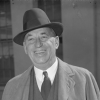












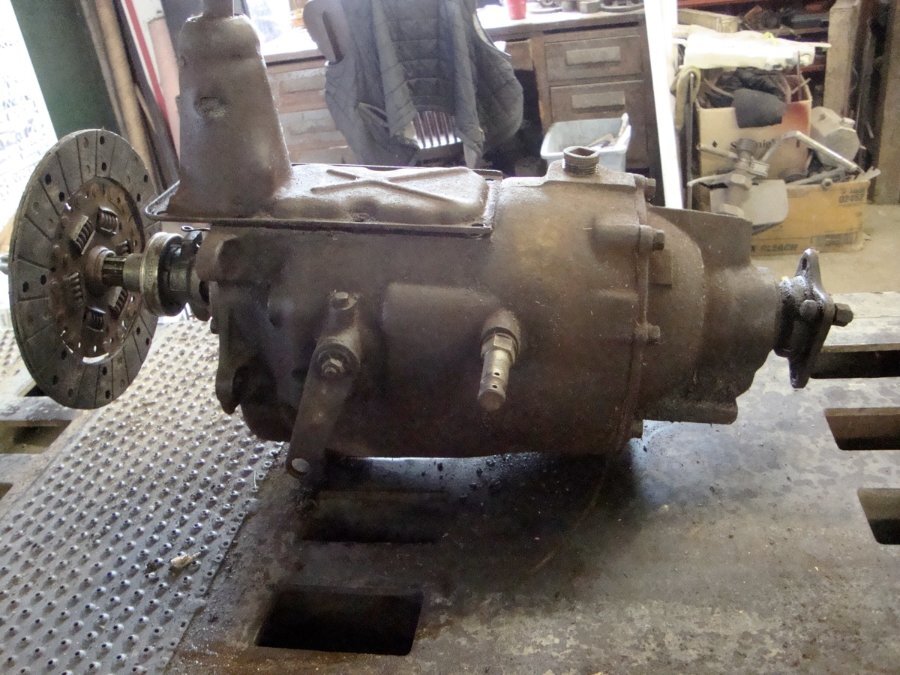
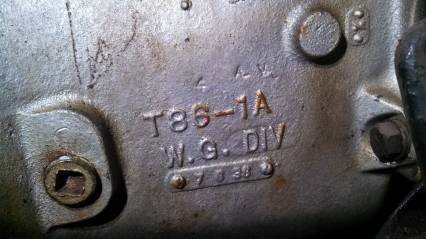
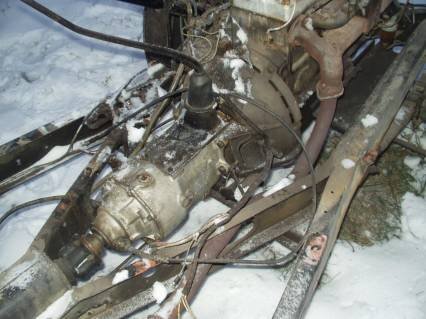
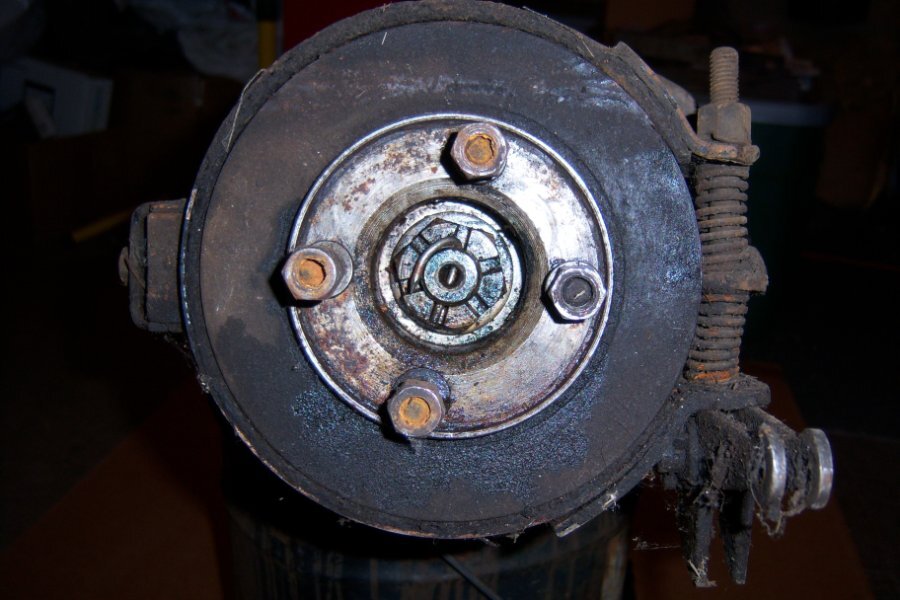



























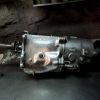
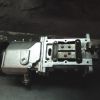











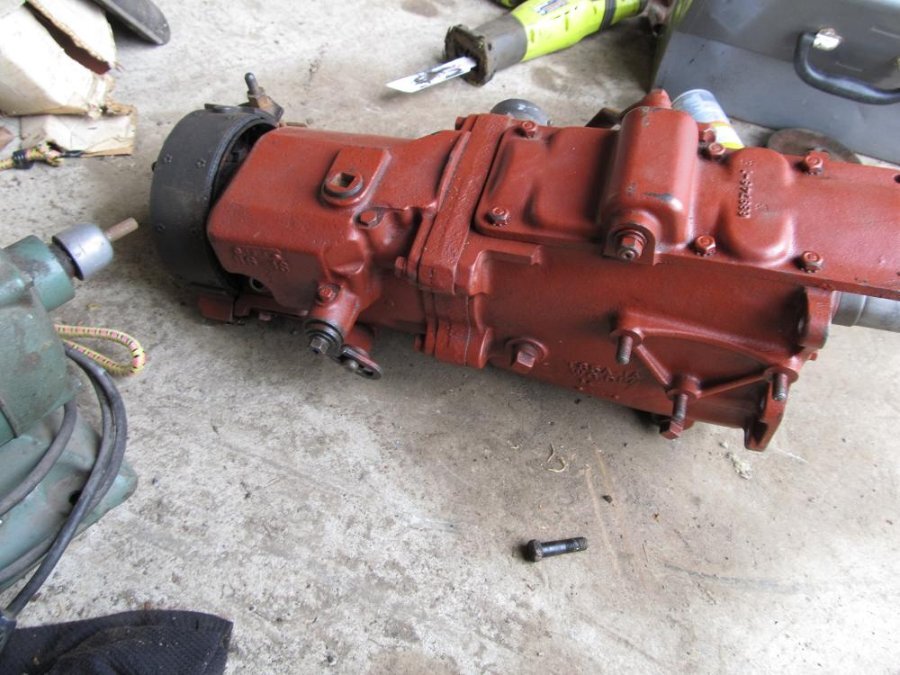
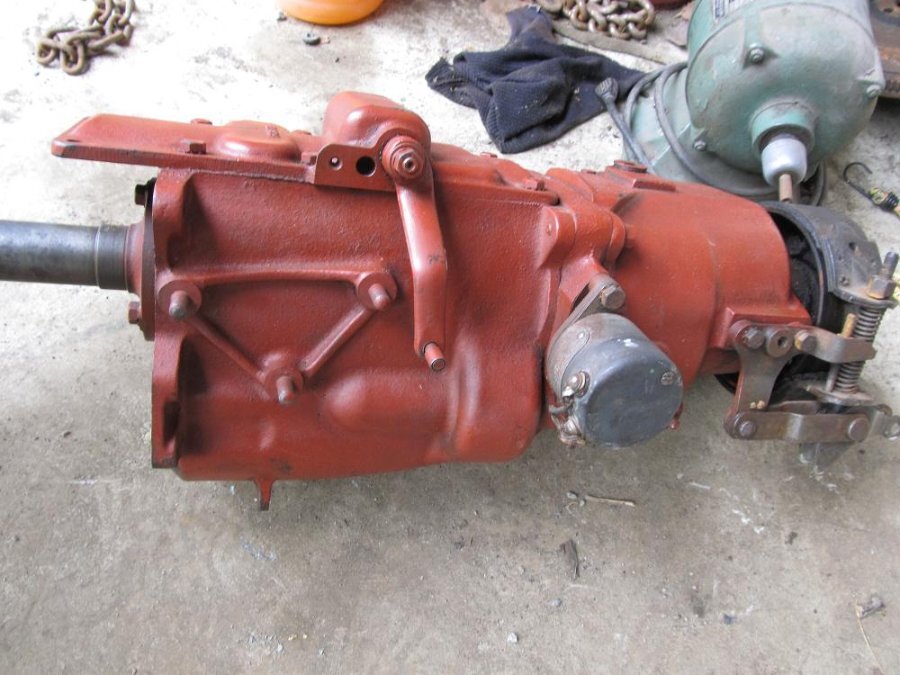
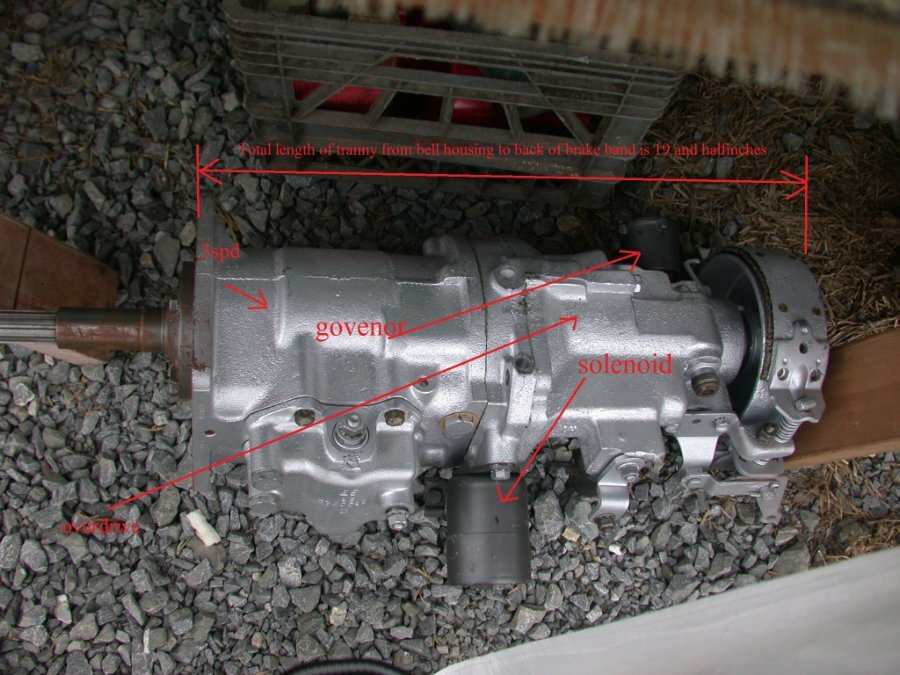
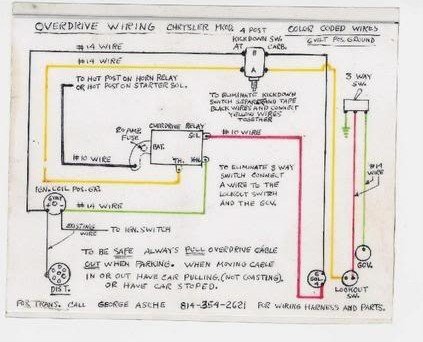
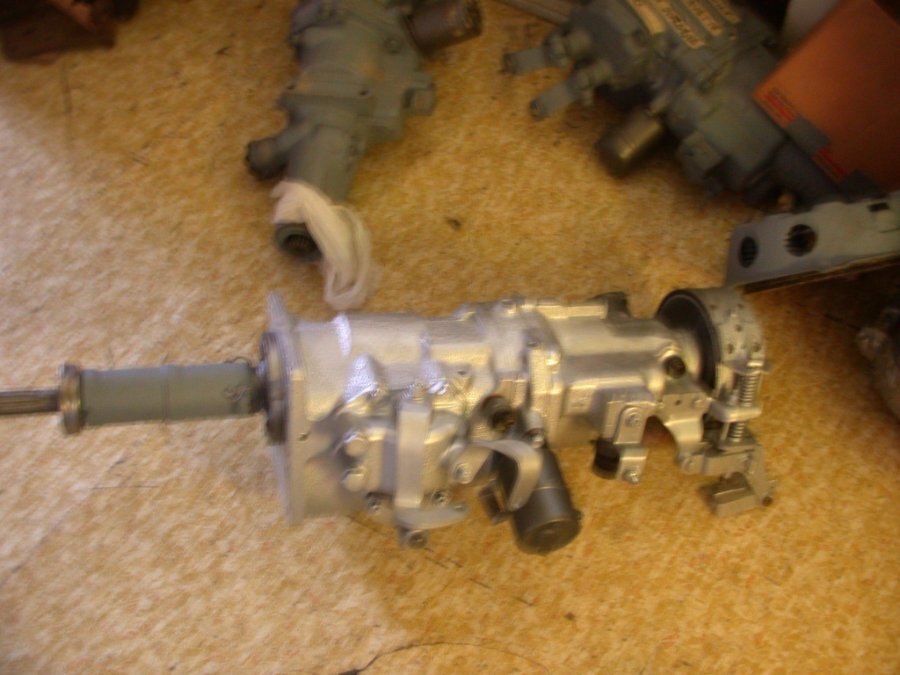
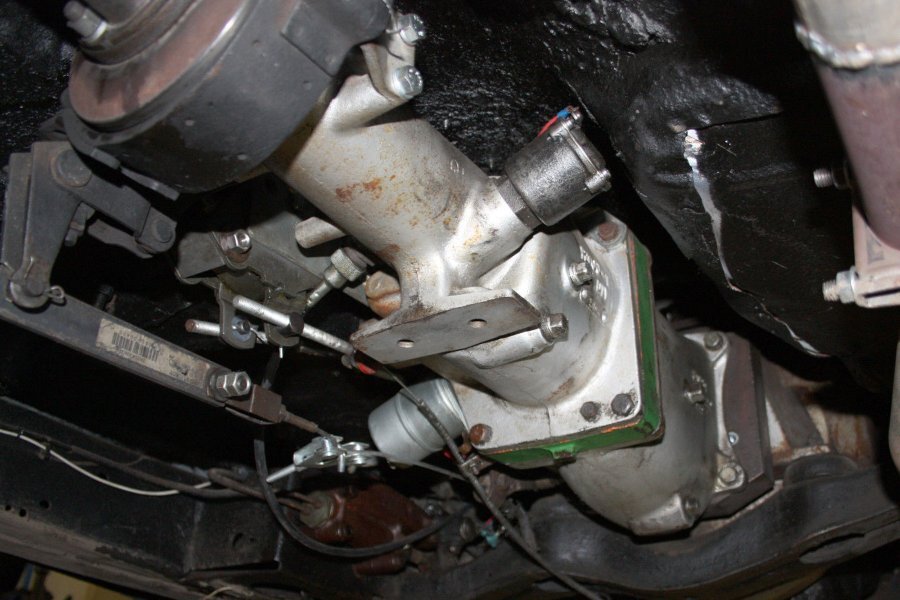
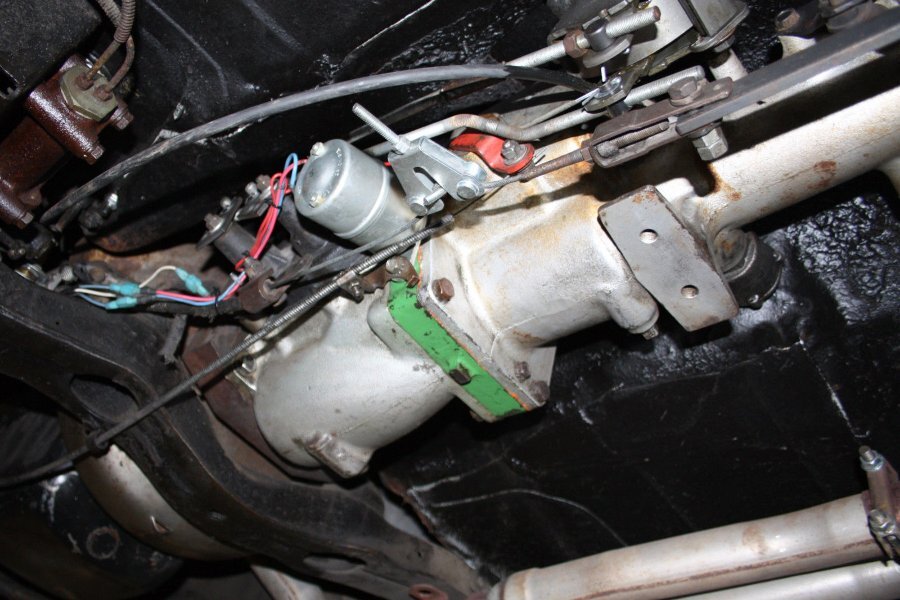




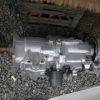
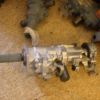
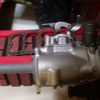
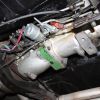
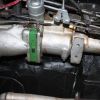
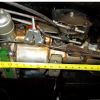
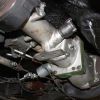
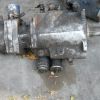
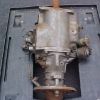
25 Comments
Recommended Comments